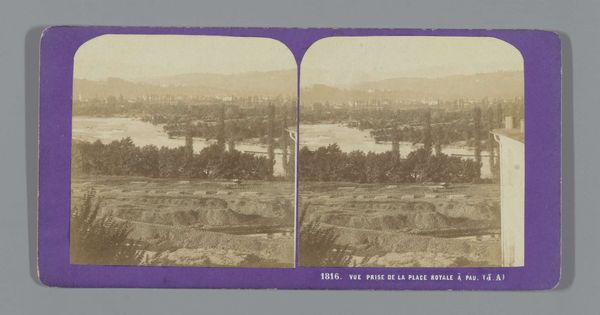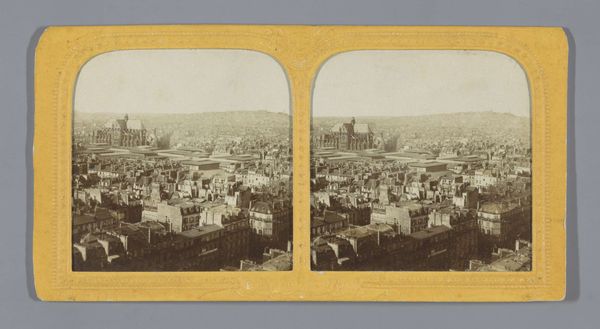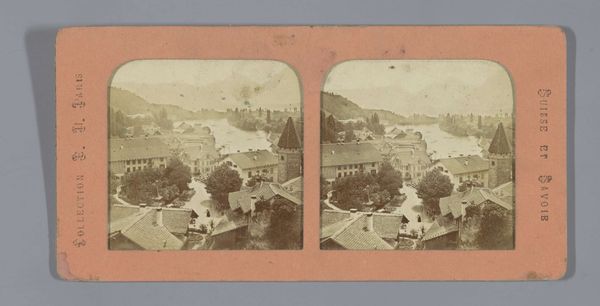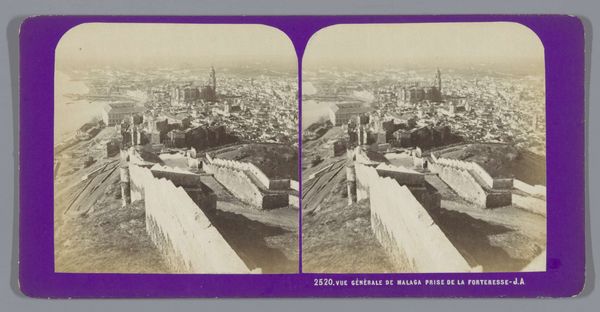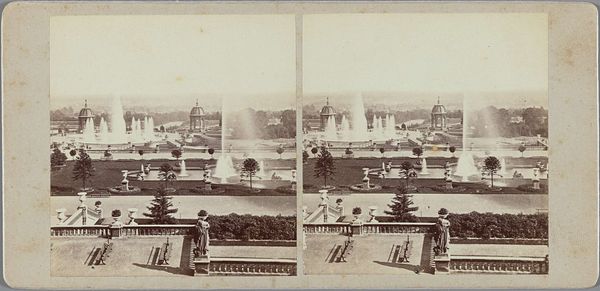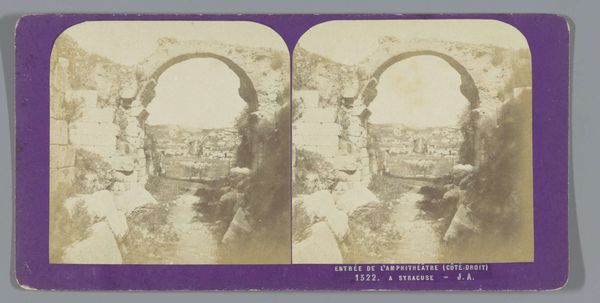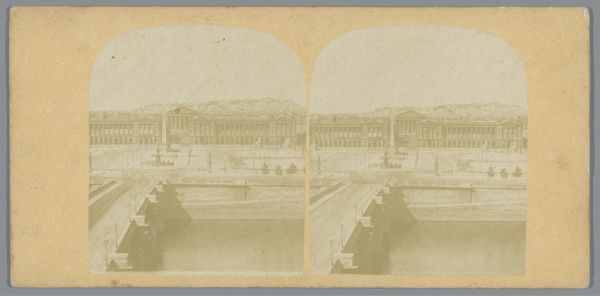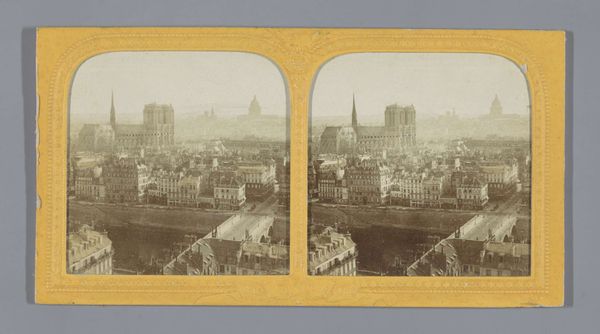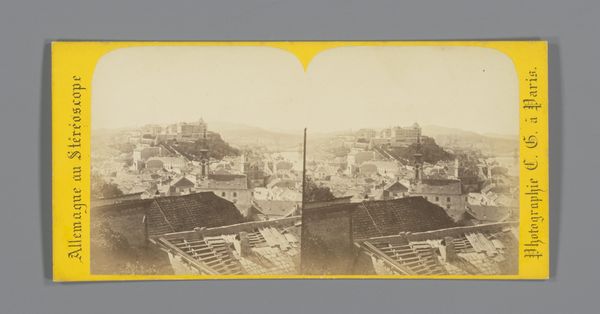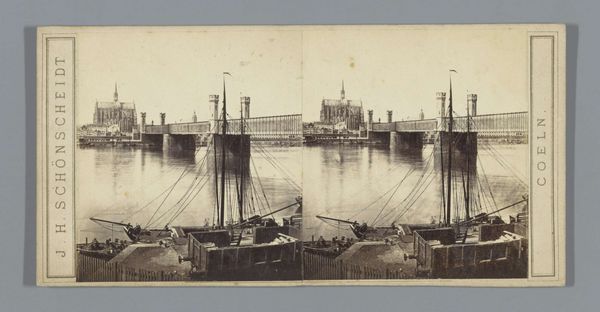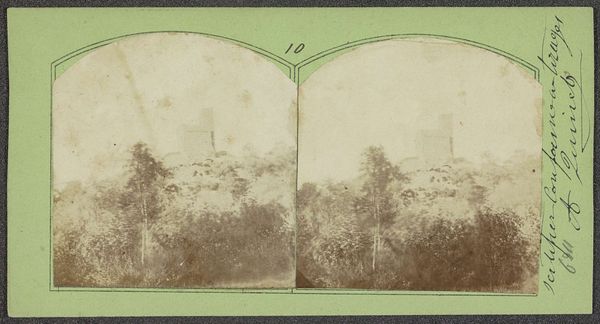
Gezicht over de Genesee River nabij Portage, New York, in de verte de Portage Viaduct 1856
0:00
0:00
photography, gelatin-silver-print
#
landscape
#
photography
#
gelatin-silver-print
#
hudson-river-school
#
realism
Dimensions: height 85 mm, width 174 mm
Copyright: Rijks Museum: Open Domain
Curator: This gelatin-silver print by Frederick Langenheim, titled "Gezicht over de Genesee River nabij Portage, New York, in de verte de Portage Viaduct," was produced around 1856. It offers a captivating view of the American landscape during a period of rapid industrialization. Editor: It’s starkly beautiful. The muted tones create a scene that is both grandiose and a little melancholic. The way the composition uses contrasting horizontal and vertical lines is interesting, almost unsettling. Curator: Indeed. Langenheim’s decision to frame nature alongside the man-made Portage Viaduct presents a compelling statement about industrial progress of the 19th Century. The photographic medium itself, in its nascent stage, was seen as both a scientific marvel and a means to document and tame the wilderness. Consider the social context: this image appeared at a time when railroad expansion was dramatically reshaping both physical landscapes and social structures. Editor: The starkness almost veils that, though. Focusing on the lines—the bridge, the falls, the framing around each panel—highlights geometry and structure more than commerce or disruption. I’m fascinated by how the textures captured – from the rushing water to the dense foliage – convey a distinct atmosphere. The tonal range achieved with the gelatin-silver print emphasizes shape. Curator: But that "shape" speaks volumes about industrial ambition. This wasn’t merely landscape photography. The choice to showcase the viaduct represents human triumph over nature—a visual testament to engineering prowess made accessible for mass consumption. These stereo cards themselves become artifacts of industrial production and a rapidly expanding visual culture. Editor: Maybe so, but there's an inherent duality. The symmetry pulls us to appreciate the forms themselves. We look at it as a harmonious whole before anything else. Curator: Perhaps, though the “harmony” here relies on subjugation, a subtle shift in perception that underscores a materialist view of the American landscape at the time. Editor: Well, even considering these differing perspectives, it remains a compelling artifact. Curator: Indeed. A compelling visual testament to an era defined by progress and transformation.
Comments
No comments
Be the first to comment and join the conversation on the ultimate creative platform.
